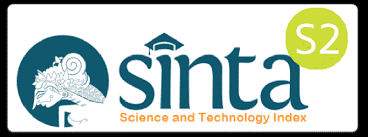THE INFLUENCE OF PEPAYA LEAF STEW (CARICA PAPAYA) ON PROSTAGLANDIN (PGF2 α) AND TNF-α LEVELS IN DISMENOREA PATIENTS
DOI:
https://doi.org/10.35730/jk.v13i3.460Keywords:
Jurnal, Kesehatan, Kesehatan Masyarakat, Keperawatan, Kebidanan,Abstract
Analysis:The prevalence of dysmenorrhoea in Indonesia is quite high at 64.25%. Several factors are known as a factor in the occurrence of dysmenorrhoea among others is the increased synthesis of Prostaglandins (PGF2α) and Cytokines (TNFαα) as mediators that play an important role besides PGF2α in the inflammatory process.
Method:The purpose of this study was to determine the effect of papaya leaf decoction (Carica papaya) on Prostaglandin (PGF2 α) and TNF-α levels in Dysmenorrhea Patients.This type of research is Quasi Experiment with pre-post test group design, with a total sample of 22 people who have dysmenorrhoea, this study uses a group without treatment and with the treatment of papaya leaf decoction in the same group with a dose of 200 ml/day.
Results:The results showed the average value of Prostaglandin (PGF2 α) without treatment was 413.04 ± 11.52 pg / ml with the treatment obtained 215.71 ± 8.13 pg / ml and the average value of TNF α without treatment obtained 412.82, ± 10.90 ng / L with the treatment obtained 215.90 ± 10.77 ng / L, the analysis used is to determine the effect of papaya leave stew (Carica Papaya) administration on PGF2 α and TNF α levels, using t test, the analysis results obtained prostaglandin (PGF2α) with a value of 0.00 and TNF α with a value of p = 0.00 (p <0.05)
Conclusion:The conclusion from this study found the effect of papaya leaf decoction (carica papaya) on prostaglandin (PGF2α) and TNF α levels in Dysmenorrhea patients
References
Kemenkes RI, “Hasil Pemantauan Status Gizi (PSG) 2016,†Biro Komun. dan Pelayanan Masy., 2017.
S. M. F. Hanum and T. E. Nuriyanah, “Dismenorea dan Olahraga pada Remaja di SMK Muhammadiyah 1 Taman,†Rakernas Aipkema 2016, “Temu Ilm. Has. Penelit. dan Pengabdi. Masyarakat,†2016.
R. Geometry and G. Analysis, “gangguan menstruasi,†Society, 2019.
N. Z. Gammoh and L. Rink, “Zinc in infection and inflammation,†Nutrients. 2017.
K. Ishartadiati, “Peranan TNF, IL-1, dan IL-6 pada Respon Imun Terhadap Protozoa,†Univ. Wijaya Kusuma Surabaya, 2002.
M. O. A. Parwata, “Bahan Ajar Antioksidan,†Kim. Terap. Progr. Pascasarj. Univ. Udayana, no. April, pp. 1–54, 2016.
L. Syakhila, “Sakit Perut Saat Haid.â€
J. Marjoribanks, R. O. Ayeleke, C. Farquhar, and M. Proctor, “Nonsteroidal anti-inflammatory drugs for dysmenorrhoea,†Cochrane Database of Systematic Reviews. 2015.
Y. Liana, “Comparative Effectiveness of Papaya Leaf Stew (Carica Papaya Linn) With Turmeric Acid (Curcuma Domestica Val-Tamarindus Indica) Against Primary Dysmenorrhea,†Sriwij. J. Med., 2018.
k park, “park. k,†2013.
W. Wagito, S. M. Lubis, M. Deliana, and H. Hakimi, “Effectiveness of vitamin E as a treatment of primary dysmenorrhea in pubertal adolescents,†Paediatr. Indones., 2011.
E. Hunt, “Atrial fibrillation... This practice profile is based on NS628 Berry E, Padgett H (2012) Management of patients with atrial fibrillation: diagnosis and treatment. Nursing Standard. 26, 22, 47-56.,†Nurs. Stand., 2012.
M. Y. Dawood, “Primary dysmenorrhea: Advances in pathogenesis and management,†Obstetrics and Gynecology. 2006.
M. Attarchi et al., “Characteristics of menstrual cycle in shift workers.,†Glob. J. Health Sci., 2013.
L. A. Fortier and R. K. W. Smith, “Regenerative Medicine for Tendinous and Ligamentous Injuries of Sport Horses,†Veterinary Clinics of North America - Equine Practice. 2008.
M. Tomaszewska, “„Dyskursy Młodych Andragogów†2016, t. 17, ss. 427,†Rocz. Andragogiczny, 2017.




